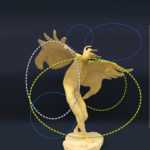Humans have a natural ability to see and recognize things. You see something and your brain immediately matches the image to a pattern you’ve seen before. You recognize the object. It’s 3D form. Comprehension is complete. Congratulations. You’ve recognized the object and completely missed the space – the invisible element of the image. Space is […]
Sculpture Technique
Descartes’s Ipad – When 3D Technology and Sculpture Combine
Some years ago, I read a short blurb about a new 3D technology that could paint an image directly onto the retina. The resolution was poor but there were high hopes that would be improved. I never heard another thing about it, but it got me thinking. Would there come a day when you wouldn’t […]
